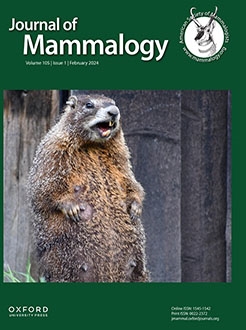Although the European Roe Deer (Capreolus capreolus) is one of the most common and widespread ungulate species in Europe and inhabiting a variety of habitats, few studies have addressed its population structure at a large spatial scale using nuclear genetic data. The aims of our study were to: (i) investigate genetic diversity, level of admixture, and genetic structure across European Roe Deer populations; (ii) identify barriers to gene flow; and (iii) reveal factors that have impacted the observed pattern of population genetic structure. Using 12 microsatellite loci, we analyzed 920 European Roe Deer samples from 16 study sites from northern, southern, central, and eastern Europe. The highest genetic diversity was found in central and eastern sites, and lowest in the northern and southern sites. There were 2 main groups of genetically related populations in the study area—one inhabiting mainly Fennoscandia, and the second in the continental part of Europe. This second population was further divided into 3 to 5 spatially distributed genetic clusters. European Roe Deer belonging to the Siberian mitochondrial DNA clade, inhabiting large parts of eastern Europe, were not identified as a separate population in the analysis of microsatellite loci. No isolation by distance (IBD) was detected between roe deer from the fennoscandian and the continental study sites, but the Baltic Sea was inferred to be the main barrier to gene flow. Only weak IBD was revealed within the continental population. Three lower-level genetic barriers were detected in the western, southern, and eastern parts of the study area. The main factors inferred as shaping the observed genetic diversity and population structure of European Roe Deer were postglacial recolonization, admixture of different populations of the species originating from several Last Glacial Maximum refugial areas, and isolation of several study sites.
How to translate text using browser tools
4 November 2023
Genetic diversity and complex structure of the European Roe Deer population at a continental scale
Magdalena Niedziałkowska,
Kamila Plis,
Barbara Marczuk,
Johannes Lang,
Mike Heddergott,
Juha Tiainen,
Aleksey Danilkin,
Marina Kholodova,
Elena Zvychaynaya,
Nadezhda Kashinina,
Aleksey Bunevich,
Ladislav Paule,
Maryna Shkvyria,
Nikica Šprem,
Szilvia Kusza,
Algimantas Paulauskas,
Luboš Novák,
Miroslav Kutal,
Christine Miller,
Dimitris Tsaparis,
Stoyan Stoyanov,
Boštjan Pokorny,
Katarina Flajšman,
Vukan Lavadinović,
Franz Suchentrunk,
Ana-Maria Krapal,
Gabriel Dănilă,
Rauno Veeroja,
Bogumiła Jędrzejewska
ACCESS THE FULL ARTICLE

Journal of Mammalogy
Vol. 105 • No. 1
February 2024
Vol. 105 • No. 1
February 2024
C. pygargus
Capreolus capreolus
Europe
Fennoscandia
GENELAND
genetic diversity
microsatellite loci





